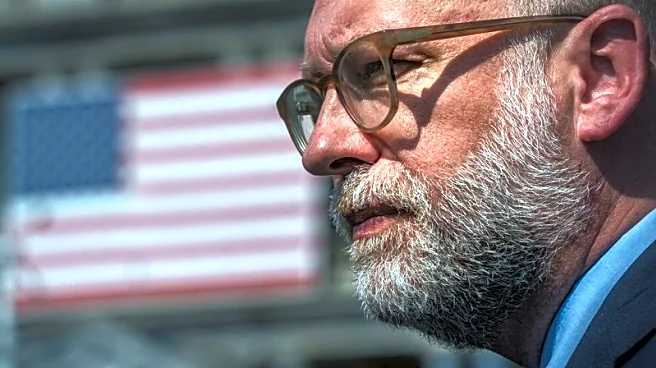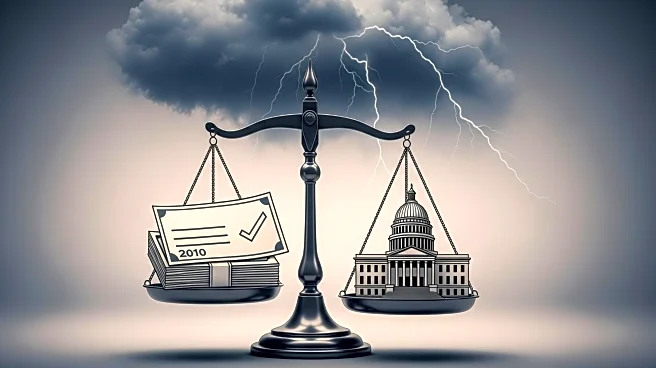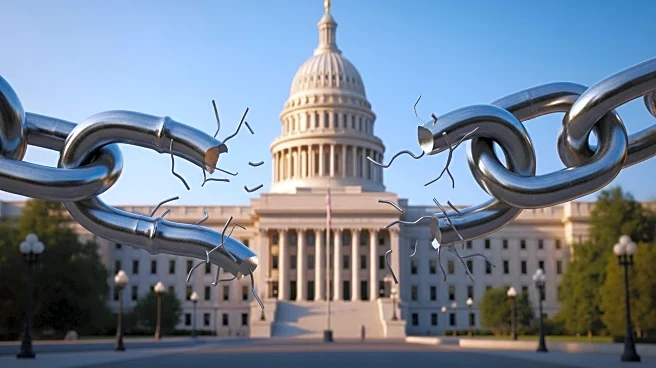What's Happening?
President Trump has threatened to lay off thousands of federal workers if the government shutdown continues. The administration has signaled plans to cut agencies and programs not aligned with its priorities. This threat comes amid stalled negotiations on Capitol Hill, with the shutdown beginning on October 1. Labor unions representing federal workers have filed a lawsuit against the administration, alleging that the threats of mass firings are illegal. The administration's approach is part of broader efforts to reshape the federal bureaucracy, as outlined in the conservative Heritage Foundation's 'Project 2025.'
Why It's Important?
The use of federal workers as a bargaining chip in shutdown negotiations highlights the political tensions surrounding government operations. The potential layoffs could lead to significant disruptions in public services and impact the livelihoods of thousands of workers. The legal challenge by labor unions underscores the conflict between the administration's policies and workers' rights, with implications for future government actions. The broader effort to reduce the federal workforce aligns with conservative goals but raises concerns about the efficiency and effectiveness of government services.
What's Next?
The lawsuit filed by labor unions could lead to court intervention, potentially halting the layoffs. The resolution of the government shutdown remains uncertain, with political leaders in a stalemate over budgetary issues. The administration's plans to reshape the federal workforce may face further legal and political challenges, as stakeholders advocate for their interests. The outcome of these negotiations will determine the future of federal workers' employment and the administration's ability to implement its policy goals.
Beyond the Headlines
The situation raises ethical and legal questions about the use of government shutdowns as leverage for political agendas. The impact on federal workers' morale and job security could have long-term effects on government efficiency and public trust in federal institutions. The broader effort to reshape the federal workforce reflects ideological goals but may face resistance from various stakeholders, including labor unions and political opponents.











